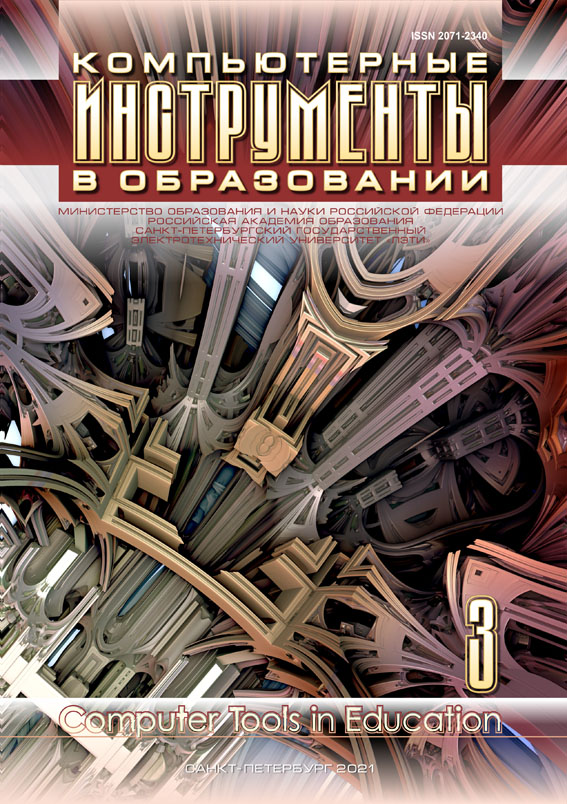Using Technology With Future Teachers Of Primary School Mathematics: A Glimpse Into An American Experience
Abstract
The paper describes the author’s experience in using technology within mathematics content and methods (undergraduate and graduate) courses for prospective teachers of primary grades (age 5–10). The main pedagogical idea behind the courses is to change pre-teachers’ perception of mathematics as a subject matter most people predictably dislike. It is suggested that technology can assist instructors in making mathematics an enjoyable subject matter without sacrificing content. The paper provides examples of using Excel, Wolfram Alpha, dynamic geometry software, computer graphing program, and the
Online Encyclopedia of Integer Sequences. In conclusion, solicited comments by teacher candidates about their experience of learning computer assisted mathematics are shared.
References
2. S. Abramovich, “Do computers enable mathematical problem solving or just make it "easy"?,” Computer Tools in Education, no. 2, pp. 45–54, 2016.
3. L. V. Alfors, “On the mathematics curriculum of the high school [Memorandum],” The American Mathematical Monthly, vol. 69, no. 3, pp. 189–193, 1962.
4. T. M. Apostol, Calculus, Vol. 1: One-variable calculus, with introduction to linear algebra, Hoboken, NJ: Wiley, 1967.
5. R. Arnheim, Visual thinking, Berkeley and Los Angeles, CA: University of California Press., 1969.
6. R. Avitzur, Graphing Calculator (Version 4.0), Berkeley, CA: Pacific Tech., 2011.
7. J. Baumert et al., “Teachers’ mathematical knowledge, cognitive activation in the classroom, and student progress,” American Educational Research Journal, vol. 47, no. 1, pp. 133–180, 2010; doi: 10.3102/0002831209345157
8. S. Beckmann, “The community of math teachers, from elementary school to graduate school,” Notices of the American Mathematical Society, vol. 58, no. 3, pp. 368–371, 2011.
9. Common Core State Standards, “Common Core Standards Initiative: Preparing America’s Students for College and Career,” in corestandards.org, 2010. [Online]. Available: http://www.corestandards.org.
10. Conference Board of the Mathematical Sciences, The mathematical education of teachers II, Washington, DC: The Mathematical Association of America, 2012.
11. G. Conole and M. Dyke, “What are the affordances of information and communication technologies?” ALT-J, vol. 12, no. 2, pp. 113–124, 2004; doi: 10.1080/0968776042000216183
12. H. Freudenthal, Weeding and sowing, Dordrecht, The Netherlands: Kluwer, 1978.
13. S. Guberman, “Gestalt theory rearranged: Back to Wertheimer,” Frontiers in Psychology, vol. 8, 1782, 2017; doi: 10.3389/fpsyg.2017.01782
14. N. Jackiw, The Geometer’s Sketchpad, [Soft]. 1991.
15. A. S. Lillard, Montessori: The science behind the genius, New York, NY: Oxford University Press, 2005.
16. B. B. Mandelbrot, “Fractals, the computer, and mathematics education,” in C. Gaulin et al., eds., Proc. of the 7th Int. Congress on Mathematical Education, plenary lectures Sainte-Foy, 1994, Quebec, Canada: Presses de L’universite Laval, 1994, pp. 77–98. ˊ
17. K. D. Michalowicz and A. C. Howard, “Pedagogy in text: an analysis of mathematics texts from the nineteenth century,” in G. M. A. Stanic and J. Kilpatrick, eds., A History of school mathematics, vol. 1, pp. 77–109, Reston, VA: National Council of Teachers of Mathematics, 2003.
18. R. P. Taylor and J. C. Sprott, “Biophilic fractals and the visual journey of organic screen-savers,” Non-linear Dynamics, Psychology, and Life Sciences, vol. 12, no. 1, 117–129, 2008.
19. L. S. Vygotsky, Lectures on the dynamic of child development, G. S. Korotaeva et al., eds., Izhevsk, Russia: Publ. House “Udmurt State University Press”, 2001 (in Russian).

This work is licensed under a Creative Commons Attribution 4.0 International License.







